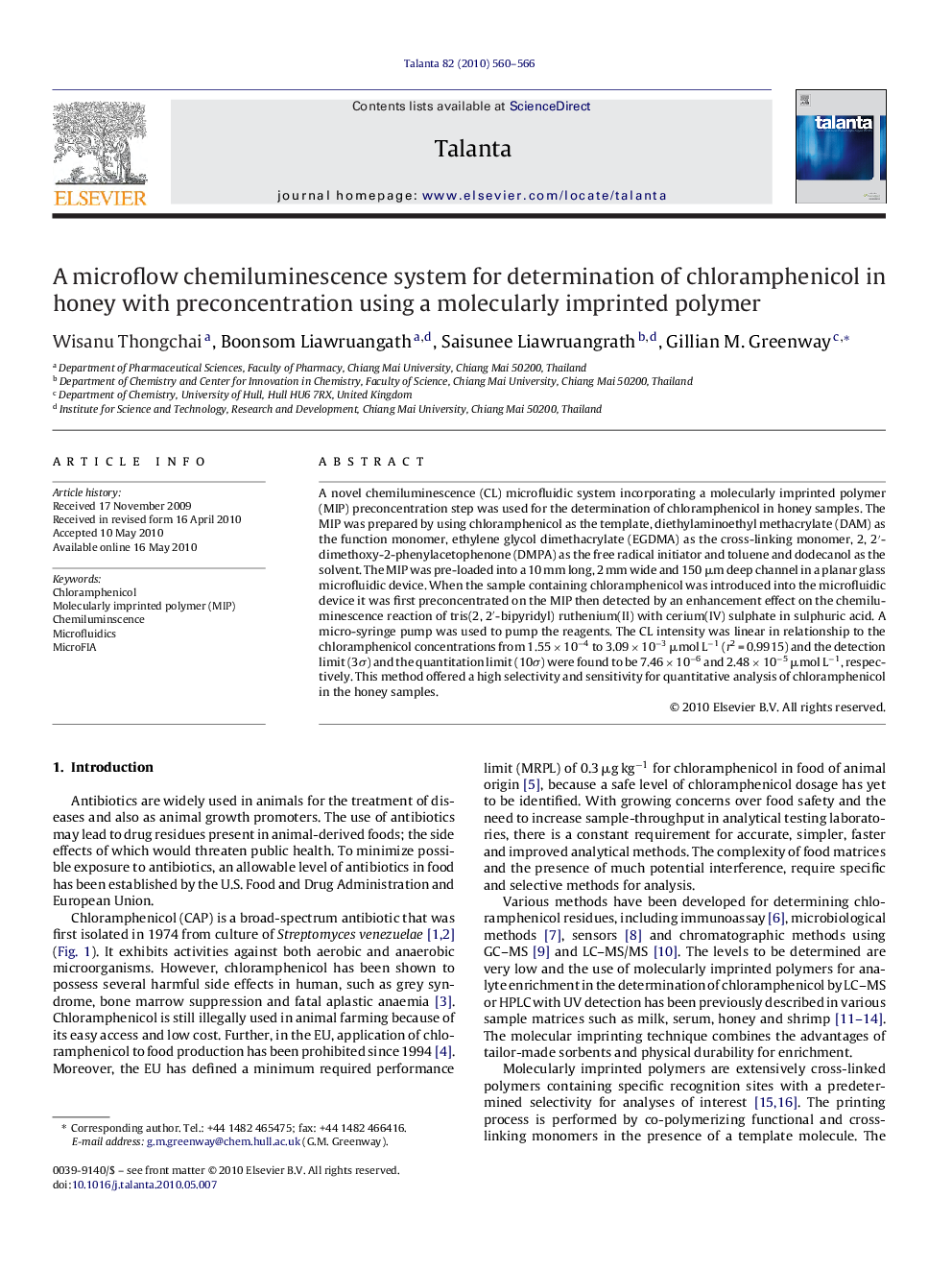| Article ID | Journal | Published Year | Pages | File Type |
|---|---|---|---|---|
| 1244686 | Talanta | 2010 | 7 Pages |
A novel chemiluminescence (CL) microfluidic system incorporating a molecularly imprinted polymer (MIP) preconcentration step was used for the determination of chloramphenicol in honey samples. The MIP was prepared by using chloramphenicol as the template, diethylaminoethyl methacrylate (DAM) as the function monomer, ethylene glycol dimethacrylate (EGDMA) as the cross-linking monomer, 2, 2′-dimethoxy-2-phenylacetophenone (DMPA) as the free radical initiator and toluene and dodecanol as the solvent. The MIP was pre-loaded into a 10 mm long, 2 mm wide and 150 μm deep channel in a planar glass microfluidic device. When the sample containing chloramphenicol was introduced into the microfluidic device it was first preconcentrated on the MIP then detected by an enhancement effect on the chemiluminescence reaction of tris(2, 2′-bipyridyl) ruthenium(II) with cerium(IV) sulphate in sulphuric acid. A micro-syringe pump was used to pump the reagents. The CL intensity was linear in relationship to the chloramphenicol concentrations from 1.55 × 10−4 to 3.09 × 10−3 μmol L−1 (r2 = 0.9915) and the detection limit (3σ) and the quantitation limit (10σ) were found to be 7.46 × 10−6 and 2.48 × 10−5 μmol L−1, respectively. This method offered a high selectivity and sensitivity for quantitative analysis of chloramphenicol in the honey samples.
